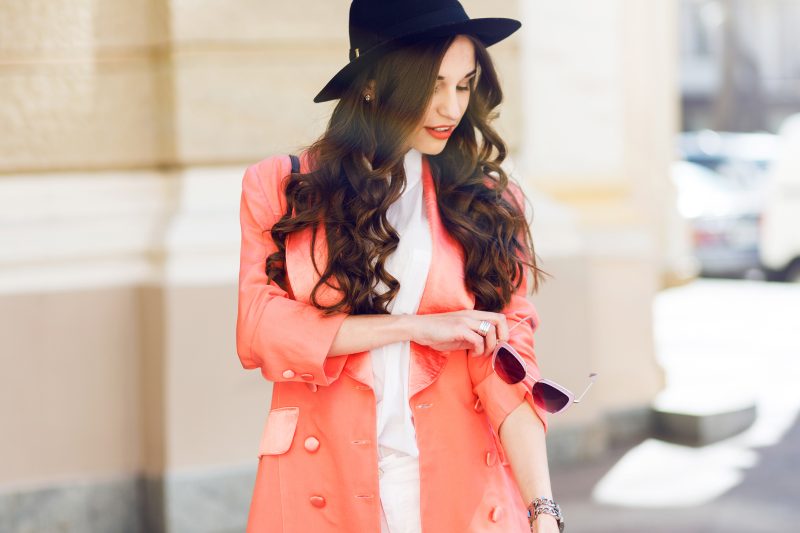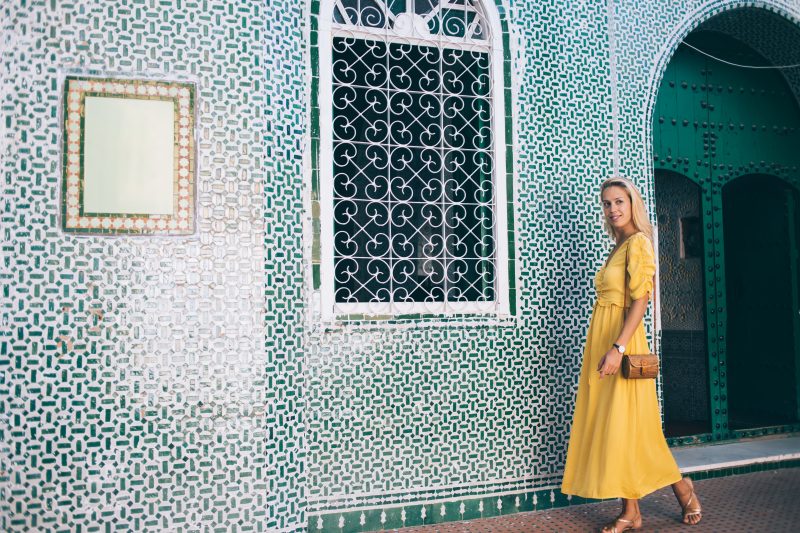The email popped up while I was eating cereal in my pajamas at 9 AM on a Tuesday, which is probably the least royal way possible to receive an invitation to Royal Ascot. “Would love to have you join us in the Royal Enclosure this year!” wrote Emma, a PR contact who usually deals with my requests for high street samples. My first thought was pure excitement – free champagne and fancy hats! My second thought was immediate terror – oh god, the dress code.
I’ve been to plenty of racing events over the years, mostly because they involve day drinking in nice outfits, which are basically my two favorite activities combined. But Royal Ascot is different. It’s not just “wear something nice and don’t spill wine on yourself” – it’s a dress code so specific and unforgiving that they literally have people at the gates checking hem lengths with rulers. Well, probably not actual rulers, but you get the idea.
The Royal Enclosure requirements read like something from a particularly strict boarding school handbook. Dresses and skirts must be knee-length or longer – and they mean it. Straps have to be at least one inch wide, which eliminates about 90% of my summer wardrobe right there. Strapless anything is banned, off-the-shoulder is forbidden, and fascinators – those cute little decorative things most of us think of as “fancy hats” – are explicitly not allowed. You need a proper hat with a solid base of at least four inches, which sounds like something my grandmother would wear to church in 1952.
For men it’s even more specific – full morning dress including top hats, which unless you’re getting married or starring in a period drama, you probably don’t just have hanging around. My boyfriend looked at the requirements and immediately started researching hire companies because buying a morning suit for one event is the kind of financial decision that keeps you awake at night.
After my initial panic – which involved approximately three cups of coffee and falling down a very deep Google rabbit hole of “what even counts as morning dress” – I realized this was actually a perfect opportunity to figure out how normal people can navigate these ridiculously specific dress codes without spending more than their monthly rent on an outfit they’ll wear once.
My approach, because I’m apparently the kind of person who creates spreadsheets for social events now, was to break down exactly what I needed and figure out the most cost-effective way to tick every box. The hat was clearly going to be the biggest challenge. Proper millinery starts at around £200 and goes up from there, and let’s be honest – when was I going to wear a massive formal hat again? I live in Manchester and work in marketing. Wearing statement hats to my Tuesday morning meetings would be… a choice.
The solution came from my friend Kate, whose sister got married two summers ago. “Mum still has the hat she bought for Lucy’s wedding,” she texted after I’d sent a slightly desperate message to our group chat. “She said she’s never wearing it again and you’re welcome to borrow it. It’s cream with navy trim – she spent like £300 on it and wore it for six hours.”
This turned out to be the key insight that changed everything: the borrowed hat network. Every woman over forty in Britain seems to have at least one expensive hat purchased for a wedding or special occasion, worn once, and then relegated to a hat box in the spare room. They’re not sentimental items like wedding dresses – they’re just expensive accessories gathering dust, and most owners are delighted to have them actually used again.
Kate’s mum’s hat was perfect – classic enough to pass any dress code inspection, expensive-looking enough that I wouldn’t feel underdressed, and best of all, completely free. She even threw in a hatpin and a tutorial on how to secure it properly, delivered with the kind of detailed instructions that suggested she’d learned from experience about racing day hat disasters.
With the hat sorted, I moved on to the actual outfit. My first instinct was to look for a dress, but after spending an afternoon trying on various options, I realized that finding a single piece that ticked all the boxes – right length, appropriate neckline, suitable for standing outside for hours, comfortable enough for eating and drinking, and something I might actually wear again – was basically impossible.
So I switched tactics and focused on separates instead. A skirt that definitely met the length requirements, paired with a top that covered my shoulders appropriately. This opened up way more options and meant I’d end up with pieces I could actually incorporate into my normal wardrobe instead of a one-off costume.
I found the skirt first – navy pleated midi from COS for £85, which looked much more expensive than it was and had an elasticated waistband. Anyone who’s ever spent a day at an event involving multiple courses and champagne will understand why an elasticated waistband is not just practical but essential. The top took longer – I needed something that covered my shoulders without looking frumpy, smart enough for the Royal Enclosure but not so formal I’d never wear it to work.
Eventually I settled on a cream silk shirt from & Other Stories with covered buttons and slightly puffed sleeves – £73 and the kind of piece that would work just as well with jeans as it did with a formal skirt. The whole outfit came to £158, which definitely isn’t nothing, but considering that some people spend £500+ on a single dress for Royal Ascot, it felt reasonable.
Shoes were the next challenge because they needed to work on grass while still looking elegant, be comfortable enough for a full day of standing and walking, and ideally be waterproof enough to handle British summer weather. After trying on what felt like every pair of heels in central Manchester, I ended up with navy suede block heels from Russell & Bromley. At £185 they were the most expensive single item in my Ascot outfit, but I’d been looking for navy heels anyway and knew I’d wear them constantly.
The morning of the event, I got ready with the kind of precision usually reserved for job interviews or first dates. Everything had to be perfect because the alternative was being turned away at the gate, which would be mortifying on multiple levels. The borrowed hat was secured with approximately seventeen hairpins and enough hairspray to withstand a small hurricane.
Walking into the Royal Enclosure, I was convinced everyone would immediately spot me as an impostor – someone who’d assembled her outfit from the high street rather than having it custom-made by proper dressmakers. But you know what I discovered? Most people looked… normal. Well-dressed and appropriate, but not like they’d stepped out of the pages of Tatler or spent thousands on their outfits.
Yes, there were women in head-to-toe designer ensembles with hats that probably cost more than my car. But there were just as many people who’d clearly taken a similar approach to mine – thoughtful combinations that met the dress code without requiring a trust fund. The men who’d hired their morning suits rather than buying them (because seriously, when else would you wear one?). The women in elegant high street separates rather than bespoke dresses.
As the day went on, I became increasingly grateful for every practical decision I’d made. The block heels that didn’t sink into the grass when we walked around the parade ring. The elasticated waistband that accommodated a lunch considerably larger than I’d planned for. The separate top that could be discretely adjusted when necessary without compromising the whole outfit.
By the time we were watching the final race – several glasses of champagne in and thoroughly enjoying ourselves – I felt completely comfortable and still looked presentable. My high street outfit had carried me through the entire day without any disasters, proving that you really don’t need to spend a fortune to navigate even the strictest dress codes successfully.
The biggest lesson I learned is that Royal Ascot dressing isn’t about having the most expensive or elaborate outfit – it’s about looking appropriate and feeling comfortable in what you’re wearing. The women who really stood out weren’t necessarily wearing the most costly ensembles, but those who’d dressed with confidence and looked like themselves, just a more formal version.
If you’re ever facing a similar situation – invited somewhere with a serious dress code but lacking a serious budget – here’s what actually works. Start with the most challenging requirement first, which at Royal Ascot is definitely the hat. Borrow if at all possible because decent hats are expensive and unless you’re planning a career change to professional wedding guest, you’re probably not going to wear it enough to justify buying.
Think about separates instead of a single statement piece. They’re more versatile for future wear and often easier to fit properly. Focus on classic shapes and colors rather than trendy pieces – they photograph better, age better, and work with more occasions.
Don’t compromise on shoes, especially for an all-day outdoor event. Comfortable, well-made shoes that you can actually walk in will serve you infinitely better than anything that looks amazing but leaves you hobbling by lunchtime. And remember that weather is always a factor at British outdoor events – choose fabrics and styles that can handle a bit of rain without disaster.
Most importantly, don’t feel like you have to completely abandon your personal style to meet formal dress codes. The requirements are specific, but within those boundaries there’s still room to choose things that feel like you rather than adopting a costume that makes you feel like you’re playing dress-up.
The borrowed hat went back to Kate’s mum with a bottle of champagne and a proper thank you note. It’s probably back in its box now, waiting for the next person who needs to look properly hatted for a special occasion. Meanwhile, I still wear both pieces of my Ascot outfit regularly – the skirt to work meetings where I want to look extra professional, the shirt with jeans for dinner out. Best £158 I’ve spent on clothes in ages, and I have the photos to prove it actually worked.
Sometimes the most sustainable approach to special occasion dressing isn’t buying something new at all – it’s figuring out how to make the system work for regular people with regular budgets who just want to enjoy the champagne without worrying about whether their outfit is fancy enough.



